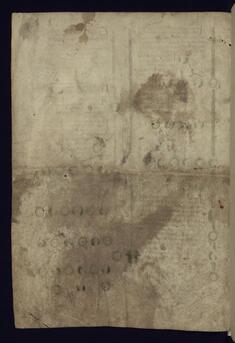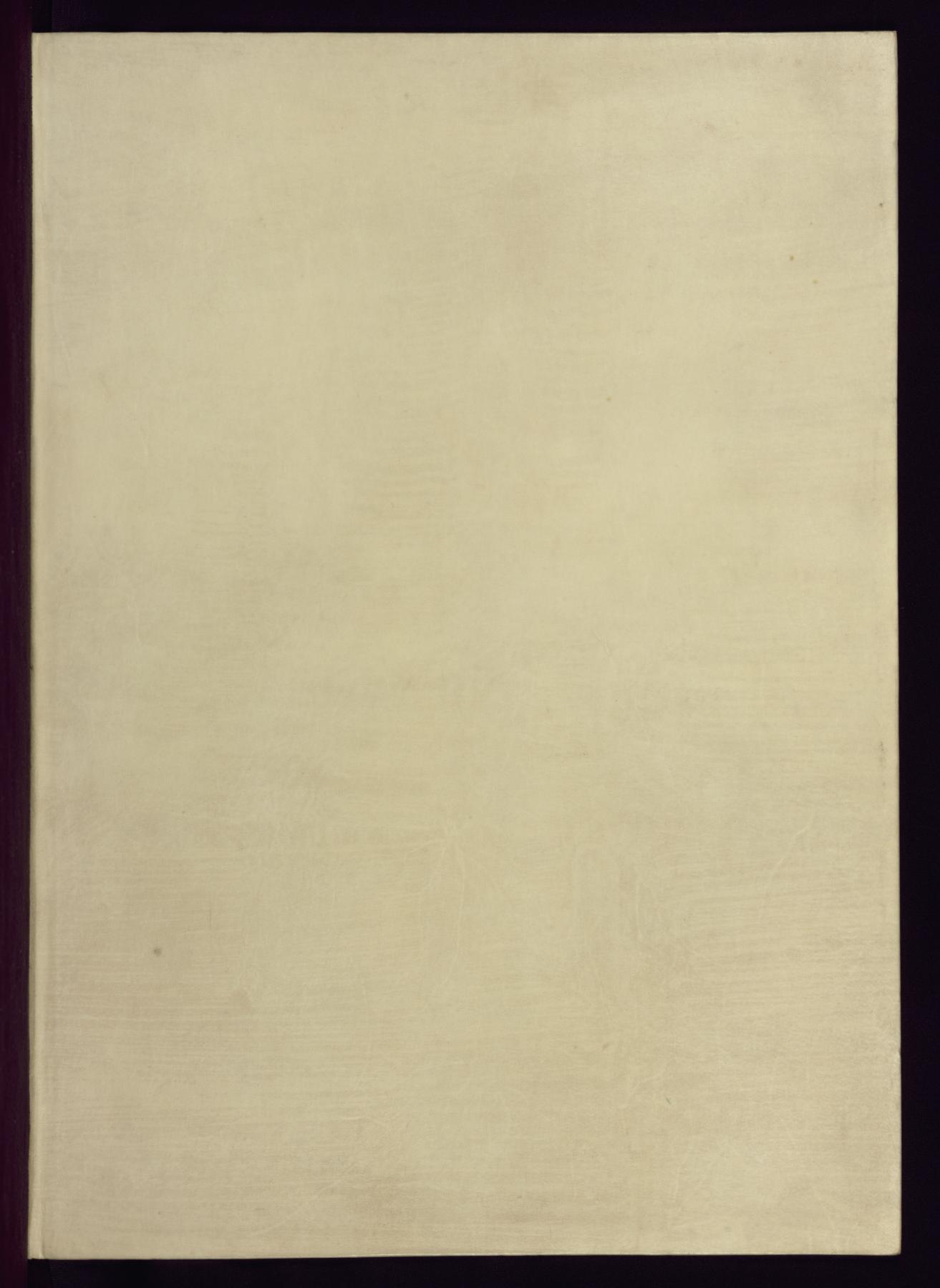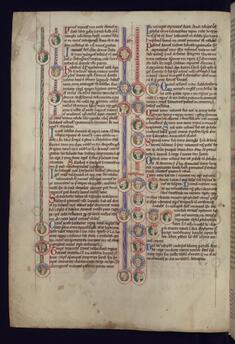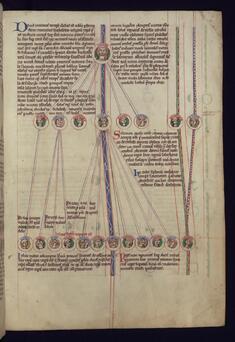Peter of Poitiers' Historical genealogy of Christ
(Manuscripts and Rare Books)
This English manuscript was created in the early thirteenth century soon after the death of its author, Peter of Poitiers, theologian and Chancellor of the University of Paris from 1193 to 1205. It is an early copy of his text, the Compendium historiae in genealogia Christi. Intended as a teaching aid, the work provides a visual genealogy of Christ comprised of portraits in roundels, accompanied by a text discussing the historical background of Christ's lineage. It also includes episodes from biblical history, including Adam and Eve, Noah's Ark, the Nativity, the Virgin and Child, the Crucifixion, and the Resurrection. Early manuscripts like this tend to be in the form of a book, and other examples can be found in London, British Library Cotton MS Faustina B VII, and Cambridge, Corpus Christi College MS 83. Later manuscripts of this text are often presented in roll form.
Provenance
Provenance (from the French provenir, 'to come from/forth') is the chronology of the ownership, custody, or location of a historical object. Learn more about provenance at the Walters.
Made in England, early thirteenth century; Quaritch, London; William Salloch, Ossining, New York [date and mode of acquisition unknown]; Sale, 1981; Walters Art Museum, 1981, by purchase [Catalog 375, no. 43].
Exhibitions
| 1986 | Text and Image: Medieval Book Illustration. The Walters Art Gallery, Baltimore. |
| 1984-1985 | Illuminated Manuscripts: Masterpieces in Miniature. The Walters Art Gallery, Baltimore. |
Conservation
| Date | Description | Narrative |
|---|---|---|
| 7/1/1988 | Examination | other |
Geographies
United Kingdom, England (Place of Origin)
Measurements
H: 13 9/16 × W: 9 5/8 in. (34.4 × 24.5 cm)
Credit Line
Museum purchase, 1981
Location in Museum
Not on view
Accession Number
In libraries, galleries, museums, and archives, an accession number is a unique identifier assigned to each object in the collection.
In libraries, galleries, museums, and archives, an accession number is a unique identifier assigned to each object in the collection.
W.796
Do you have additional information?
Related Objects

Binding from Peter of Poitiers' Historical genealogy of Christ

Genealogy of Christ from Herodes to Tiberius Cesar, with Nativity, Virgin and Child, Crucifixion, and Resurrection

Genealogy of Christ from Adam to Thare, with Adam and Eve as well as Noah's Ark







